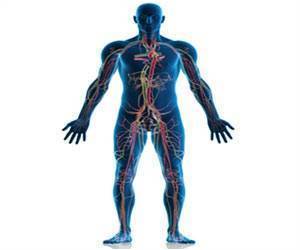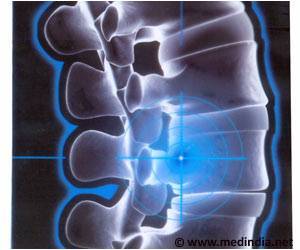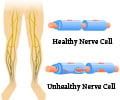Scientists have identified that merlin protein plays a key role in repair of damage to peripheral nerves, providing a new line of treatment.
- Scientists from Plymouth University have identified that Merlin could repair damage to nerve tissues
- Peripheral nerve damage is a debilitating condition with limited treatment options
- The discovery of Merlin’s role in repair could provide a potential treatment option.
- People who suffered peripheral nerve damage due to various forms of trauma, including injuries incurred during the war.
- People with type 1 or type 2 diabetes who suffer from peripheral nerve damage. People with diabetes often burn or hurt their feet due to a lack of sensation as they experience ongoing damage. There is no known treatment for such damage.
Merlin
The main aspect of the study is the discovery of a protein called Merlin (moesin-ezrin-radixin-like protein). This protein was found to- Play a role in suppressing tumors of the nervous system.
- Be associated with the development of brain tumors and other nervous system tumors when present in low levels.
- Play an important role in the mechanism of repair of nerves. This was the first study to highlight this function of the protein.
Schwann Cells
A nerve cell communicates with distant targets in the body for passing information by sending electrical signals along a thin, long part of the cell which is called the axon. As an adaptation to increase the speed of transmission of these electrical signals, the axon is wrapped or insulated by a sheath of myelin, which is produced by another group of cells which are the Schwann cells.The myelin sheath is characterized by jelly roll like cake that blocks the loss of electrical signals, protecting information passage. In the absence of an intact axon and the sheath of myelin, the peripheral nerve cells cannot activate the muscles or pass on information to the target cells from the brain or from the limbs to the brain.
Effect on Schwann Cells of the Peripheral Nervous System
The research team consisting of neuroscientists found that Merlin present in the Schwann cells of the peripheral nervous system (PNS) played an important role in the repair of nerves, by studying mouse models. The main role of these Schwann cells is to wrap the nerve cell projections and to insulate them as they transfer information from in and out of the spinal cord and the brain. These cells also produce unique regenerative properties after an injury, and a crucial role was identified in the study for the Merlin protein associated with this repair on damage to the peripheral nervous system.A protein called YAP in Schwann cells, that lack the protein Merlin, are associated with the failure to repair nerves. The discovery of the new protein, Merlin, in the repair of the PNS could provide new therapies in the event of age-associated decline in PNS function as well as in trauma associated damage.
The lead author of the study, Dr. David Parkinson, a professor of Neuroscience from The Plymouth University Peninsula Schools of Medicine and Dentistry said that damage to the peripheral nerve had very few options for treatment and that people who sustained it, had a poor prognosis. This new and exciting finding identified, for the first time, methods by which the repair of the nerve damage could take place. An understanding of these methods would aid developing effective therapies in situations where there are currently no options for therapy.
Characteristics of Protein Merlin in Tumor Cells
The condition neurofibromatosis type 2 (NF2) is associated with tumors of the nervous system and is due to the loss of function of the NF2 gene. This gene codes for the protein Merlin, which belongs to the ERM (Ezrin, Radixin and Moesin) protein family.- Proliferation
- Adhesion
- Apoptosis
- Survival
- Motility
- Invasion
The discovery of Merlin and its role in the repair of damage to the peripheral nervous system could provide a unique option for treatment. The damage to the peripheral nerves can have a debilitating effect on the individual and lower the quality of life lead. Such treatment options could open treatment pathways which could improve the quality of life of these patients.
- Merlin: The wizard requires protein stability to function as a tumor suppressor - (https://www.ncbi.nlm.nih.gov/pmc/articles/PMC3459139/)
- Schwann Cells - (https://www.ncbi.nlm.nih.gov/pubmedhealth/PMHT0025728/)
Source-Medindia














